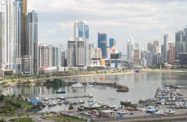Free trade zones (FTZs) have long contributed to Panama’s economic development by attracting foreign direct investment, creating jobs and helping the country to benefit from the canal in ways that extend beyond the collection of tolls. While the Colón Free Zone (CFZ) is the oldest and best-known, the country hosts more than 15 FTZs.
The CFZ, the second-largest FTZ in the world after Hong Kong, will likely continue to be the heart of wholesale distribution and re-exportation, although newer special economic areas (SEAs) – including the massive Panama Pacifico and the high-tech City of Knowledge – are likely to represent the next stage of economic development, as the government looks to boost value-added services and manufacturing.
The City of Knowledge, established in 1999 to foster the development of scientific, technological, educational and cultural industries, hosts a wide range of companies and organisations including Hewlett-Packard, GlaxoSmithKline, Caterpillar, UNICEF and the World Bank, as well as branches of several international universities.
Panama Pacifico, a 1400-ha development being built on the former US Howard Air Force Base near the Pacific entrance to the Panama Canal, is a general purpose zone, although it principally seeks to attract companies in the call centre, back office, logistics, high-tech manufacturing, and maritime and aviation service sectors. A number of multi-nationals have made it their home, including Dell, 3M and Citibank. The initial phase of Panama Pacifico is fully operational, although development of the $700m project is expected to continue over the next decade.
Like all of Panama’s FTZs, Panama Pacifico offers fiscal, tax and labour-related incentives including duty-free imports, income tax breaks and special labour regimes. Panama Pacifico also has a one-stop shop that helps investors navigate government bureaucracy and handle all visa-related paperwork.
Meanwhile, the CFZ is undergoing a modernisation project to keep up with changing times as well as an increasing demand for space. Established in 1948, the CFZ has grown into a major entity employing around 29,000 people, and overcrowding has become a problem. As such, the CFZ is expanding its warehouse capacity by adding a further 114 ha of space in Coco Solito, while infrastructure improvements are being made to improve commercial services.
Enrique Adolfo Jiménez International Airport, which serves Colón, is also undergoing expansion and is being upgraded at a cost of $58m, according to figures provided by the Civil Aviation Authority. The renovated airport will not only feature additional cargo and passenger capacity, but more importantly will receive international flights with over 100 passengers per aircraft.
However, Colón faces several challenges, including Colombia’s imposition of tariffs on apparel exports from CFZ, as well as mounting unpaid bills by Venezuelan importers. The two countries combined account for around a quarter of sales from the zone.
According to statistics from the national comptroller, commercial goods movement through the CFZ totalled $30.8bn, equivalent to roughly 85% of the World Bank’s $36.25bn calculation of Panama’s GDP. The country’s role as one of the world’s main transhipment points will remain central to economic development, particularly once expansion of the canal is completed. However, when it comes to developing the country and adding value to the multitude of goods coming through the canal, the FTZs could have an even greater impact on the economic path in the longer term.


